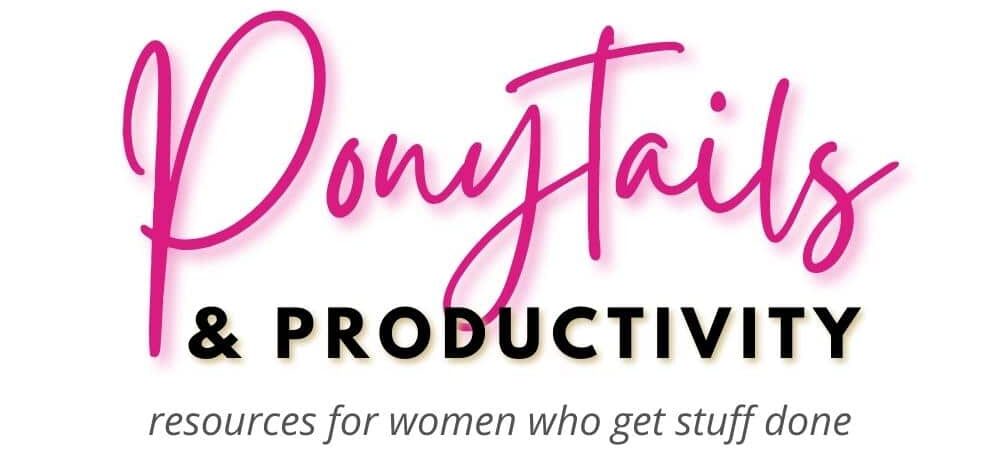How to Achieve Your Most Ambitious Goals by Brainstorming
If you want to achieve your most ambitious goals, then you need to start brainstorming!
Brainstorming is a great way to come up with new ideas and solutions to problems.
In this blog post, we will discuss the basics of brainstorming and how you can use it to achieve your biggest goals.
We will also provide tips for getting the most out of your brainstorming sessions.
So if you’re looking for a way to achieve more success in life, start brainstorming today!
How to Achieve Your Most Ambitious Goals by Brainstorming
Remember brainstorming in school as a kid? They would have you sit down in front of a blank piece of paper and draw a big circle with your topic in the middle, then branch out into smaller circles with all of the things that came to mind about that topic.
I hated brainstorming.
It seemed too disorganized to be useful, and too structured to get creative with.
Well, I hate to say it, but I was wrong about brainstorming – almost as wrong as my teachers were for forcing us to do it in such an inefficient way.
In fact, there’s a real magic to brainstorming – done right, it can lead us through problem-solving, to great breakthroughs, and how to achieve your most ambitious goals. How? Read on.
What is Brainstorming?
What is brainstorming?
Brainstorming is a creative problem-solving technique that involves generating a large number of ideas in a short amount of time. It is often used when you are faced with a difficult problem or need to come up with new ideas.
How does brainstorming work?
The basic idea behind brainstorming is to generate as many ideas as possible.
This can be done by simply allowing participants to shout out ideas as they come to mind, or by writing down ideas on a piece of paper.
The key is to generate as many ideas as possible and not to criticize or judge them.

Why is brainstorming effective?
Brainstorming is a great way to come up with new ideas because it allows you to think “outside the box.”
By coming up with a large number of ideas, you are more likely to find one that is truly innovative.
Brainstorming also helps you to come up with new solutions to problems, and can help you to come up with new ways to approach old problems.
Why Brainstorming?
Have you ever heard the phrase, “Can’t see the forest for the trees?”
It basically means that you get so focused on the details of a thing that you lose sight of the bigger picture.
Or maybe you’re the other way around – you have a big end game in mind, but no idea what steps to take to actually achieve it.
I’ve been guilty of both of these.
Maybe you’re so caught up with the day-to-day of getting stuff done that you’re not quite sure, when you step back to look at it, if what you’re doing is actually getting you closer to what you want.
Maybe you’ve got an incredible big-picture goal, but when you look at it, it seems so far away. You’re not sure how to even get there at all, let alone where to start.
In both of these cases, you’re stuck looking around you, wondering, “What now?”
Well, you’re in the right place.
We’re going to brainstorm your way out of this trap and show you how to achieve your most ambitious goals.
[cboxarea id=”cbox-F7CUBIpvMpO5iwiT”]
How Do I Brainstorm, Anyway?
Trust me, you don’t have to start with a big circle in the middle of the page – unless you want to. Successful brainstorming can happen multiple ways. If you do it a different way and it works for you, I’ll never tell you you’re doing it wrong.
But I’m going to walk you through a few different ways to get started.
Method 1 – The Brain Dump
Brain dumping works best if you’ve got a million thoughts whirling around in your head and you need a little space to work through them.
It’s exactly what it sounds like – dumping all the junk that’s in your head down on paper.
It doesn’t need to be organized in any particular way; think of brain dumping as stream-of-consciousness style writing.
If you’re not sure where to begin, start by writing out what your goal is.
Chances are, a million and one thoughts come up – all the related stuff that comes along with the goal, your anxieties and fears around that goal, maybe the dozens of ideas you have on how to get started, what your next steps are, all of it.

Don’t worry about jumping from one topic to another if that’s how your mind is working – the important thing about the brain dump is to just get it all on the page. It can be in paragraph form, list form, heck, even shorthand scribbles.
Just shut up your inner perfectionist and write it all down.
Related: Simple Steps to Reverse Engineer Any Goal
When you’re completely finished, then you can worry about organizing it all into categories and sections and steps (We’ll go over that at the end).
Method 2 – Sectioned Lists
If free form brain dumping is too unstructured for you, you might do better with sectioned lists.
Just take any piece of paper (I flip it so the long edge is at the top) and divide it into columns. These can be whatever is most relevant to your goal, but I suggest including one for the big picture (what *is* your ultimate goal here?), one for what’s holding you back (fears? Doubts? Anxieties?), one for possible baby steps, etc.
This is a lot like a brain dump because you don’t have to work in any particular order, you’re free to jump back and forth. This way it’s just sectioned for you in neat little column (and you can add new sections, even whole pages, as you need to).
Method 3 – Starbursting
Starbursting is a brainstorming method where you come up with as many questions as possible in regards to your topic, instead of trying to come up with all the answers.
The article linked above focuses mostly on group brainstorming in a corporate setting, but this is easily adapted into something you can do on your own. Just come up with as many questions about your goal as you can.
If you get stuck here, try to imagine you’re explaining your goal to someone who has never heard of such a thing before and needs to know everything about it before they can understand.
Say your goal is to start your own business.
Your friend would ask, “What kind of business?
How exactly does it make money?
What products/services do you sell?
Is there a market for something like this?
Why do people hire you or buy from you instead of someone else?
What do you need to do before you can start?
How are you learning the skills you need to run a business?”
And so on.
Method 4 – Mind Mapping
Mind mapping is that “draw a circle” technique you learned in school, where you start with a centralized topic and branch out from there. Mind mapping, while I gave it a bad rap above, doesn’t have to be sloppy or boring – it can actually be super useful.

In case you’re not familiar with it, mind mapping starts in the center of your page, where you write down the main idea you’re brainstorming off of. Then you “branch out” from there, surrounding the central idea with offshoot ideas, and so forth.
Often this is pictured as a series of circles surrounded by circles which are each surrounded by circles, which… you get the idea.
Personally, I find it much easier to manage visually by laying it out in family tree style boxed graph, but choose whatever works for you.
Mind mapping works for goal setting best when you’re laying out groundwork, or trying to decide your next steps.
The first set of branches out from your central idea (goal) can be the different facets that go into achieving that goal, then each of those facets get it’s own set of steps.
I recommend the family tree style method here, because after so many branches you’re going to want to stop “branching out” into subsets and start making notes or lists out of each branch, so this gives you the space on the page to do that without your ideas getting jumbled together.
I’m not joking, the first time I realized that mind mapping could be done in a tree graph rather than endless swimming circles, it completely changed the way I approach brainstorming!
I’ve Brainstormed, Now What?
Hopefully once you’ve used at least one brainstorming technique, you’ve gained a little clarity on how to move forward toward reaching your most ambitious goals. If not, here are some Brainstorming Best Practices I keep up my sleeve:
1. Combine Brainstorming Techniques
Brain dumping is my favorite brainstorming technique, and it’s the one I usually start with, but I never end it there.
When I’m done brain dumping, I’ll plot the most relevant of what I’ve put down in a mind map to get a full picture of what my plans are. Or if you’ve used the Starburst technique, try answering those questions in a brain dump or divided into sections and see what narrative unfolds.
You can even start a new brainstorming session to work off of the data from your last one – brainstorm possible solutions to problems, possible first steps to journeys, or come up with new ways to approach an area you feel is stale.
2. Analyze Your Data
All of this will be for nothing if you don’t spend at least a little bit of time reading back over what you’ve produced.
I like to arm myself with highlighters and color code things that I see popping up again and again, or look at where ideas connect in a way I might not have noticed before.
Grab a different color pen and scribble on your own masterpiece, adding in ideas or notes about what you’ve written down.
Data is cheap until you know what it means!
3. Break it Down Into Steps
By now, you should have gained some clarity on the best way to move forward, or how to push past those obstacles you’ve been facing.
It’s time to put it all together and form your roadmap.
If you’re a super organized person with great handwriting, maybe your brainstorming session all along can serve as your roadmap.
For the rest of us (myself included), it’s beneficial to start with a totally blank slate.
Pull out a fresh piece of paper or page in your notebook and start plotting out your plan, step-by-step. Whereas your brainstorming can be jumbled and all over the place, your final copy should be laid out clearly, in chronological order.
It can be helpful to include action plans for when things come up or go wrong, or maybe notes to read over when you get discouraged.
What’s important here is that you’re drawing yourself a map that shows you the route between where you are now and where you want to be.
This is your playbook, where you keep your game plan. It’s not a bad idea to keep it somewhere you can refer to it often, be that a vision board, your planner, or even in a document on your laptop or phone.
This doesn’t mean that your plan can’t change – if your goals change, or as your circumstances change, some steps may no longer be the best course of action. This is normal. But keep it on hand, and check in every so often to stay focused.
If you DO find down the road that you need to update your plan, you’re in an even better place to revise and reassess – you now have an arsenal of brainstorming tools at your disposal to use whenever you need because you now know how to achieve your most ambitious goals!
How to Achieve Your Most Ambitious Goals by Brainstorming
Looking for some more ways to achieve your most ambitious goals? Check out these posts:
- The Exciting Benefits You Can Expect From Goal Setting
- How to Build Self Discipline (the lazy girl’s guide)
- Process Goals – What They Are, And Why They’re Crucial
- The Secrets of People Who Always Hit Their Goals
or our eBook/Audiobook on getting goal setting done in 10 easy steps:
Pin it on Pinterest:









